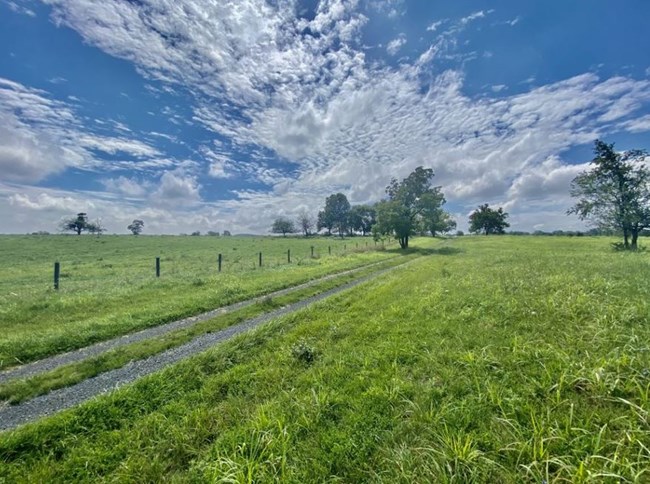Part of a series of articles titled 2022 Battlefield Restoration Grant Highlights.
Article
Third Winchester: Restoring Order in the Landscape of Memory

Shenandoah Valley Battlefields Foundation
Amount: $79,429
On September 19, 1864, three miles northeast of Winchester in Virginia’s Shenandoah Valley, more than 50,000 Union and Confederate soldiers collided across the fields and stream at the town’s edge. Fighting ebbed and flowed for hours, with the two sides trading costly assaults and counterassaults. Confederate artillery fire tore into the Union flank with horrific effect. "A more murderous fire I never witnessed," said one Confederate. “They walked death in our ranks,” recounted a Federal. At day’s end, 3,000 soldiers would never return home to their families. The Union victory, at great cost, began a series of Confederate defeats in the Shenandoah Valley along the bitter road to surrender. Today these placid, green fields bear silent witness to the human costs of conflict.
A 2022 Battlefield Restoration Grant to Shenandoah Valley Battlefields Foundation builds on the successful acquisition of the Huntsberry Farm property in 2009. With the assistance of a Battlefield Land Acquisition Grant, the Shenandoah Valley Battlefields Foundation partnered with Virginia’s Department of Conservation and Recreation and Department of Historic Resources to purchase and protect the 209-acre 19th-century farm that was caught in the war’s crossfire. This “forever” purchase, protected in perpetuity by a conservation easement, preserves the Huntsberry Farmstead, which includes the Battery Knoll from which Confederate artillery rained fire on Union forces, and the Middle Field where the bitterest part of the Battle of Third Winchester raged.
NPS’s award supports the Foundation’s on-going restoration of the Third Winchester Battlefield with the installation of period fencing at both portions of the farm. The fences that once brought order to the property will now give a sense of place to the farm and help visitors understand the battlefield’s landscape: how it was used by the people who called this place home, how it was traversed by the soldiers who fought here, and how it can be a place of renewal today.
Battlefield Restoration Grants support projects that restore “day-of-battle” conditions at nationally significant American Revolution, War of 1812, and Civil War battlefields and associated historic sites. The awards are made possible by the Land and Water Conservation Fund, which reinvests revenue from offshore oil and natural gas leasing to help strengthen conservation and recreation opportunities across the nation. These grants empower preservation partners to inspire wonder, understanding and empathy at the places that witnessed some of our nation’s most challenging events. In addition, the ABPP administers three other grants: Battlefield Land Acquisition, Preservation Planning, and Battlefield Interpretation grants. This financial assistance encourages and sustains community-driven stewardship of historic resources in Tribal, state, and local communities.
Last updated: November 8, 2022
